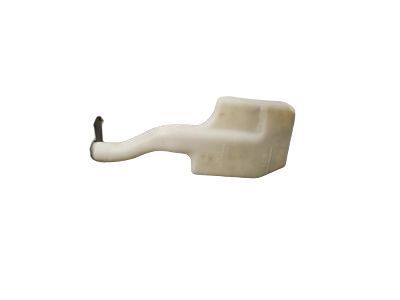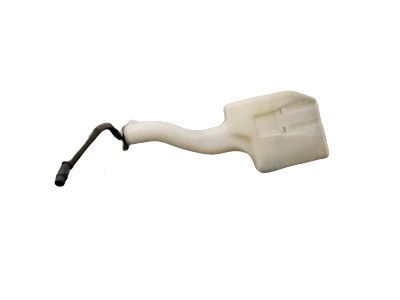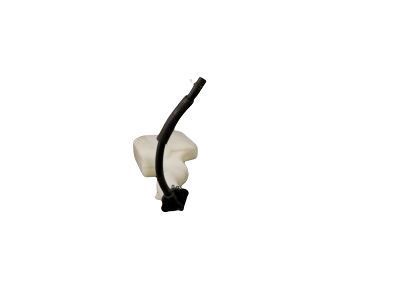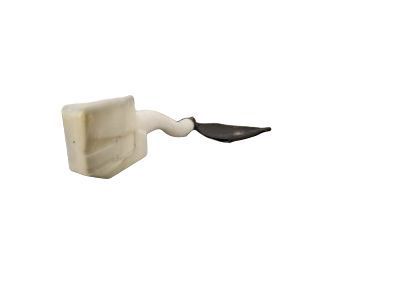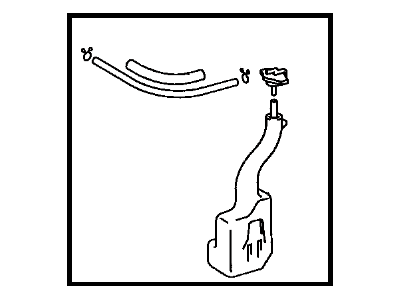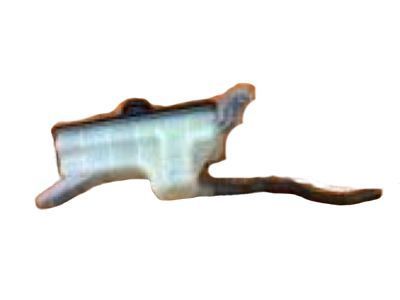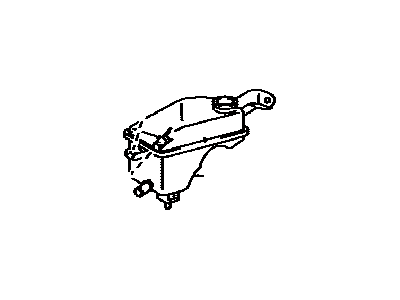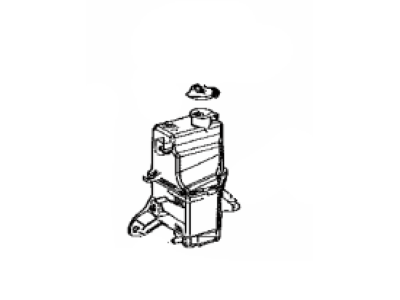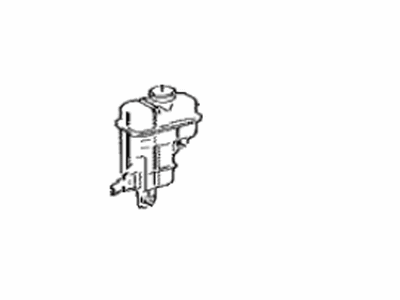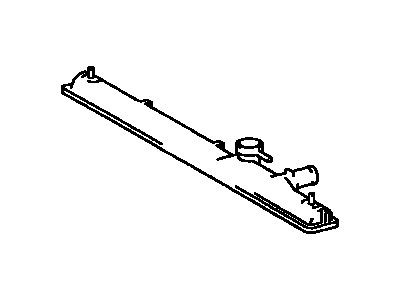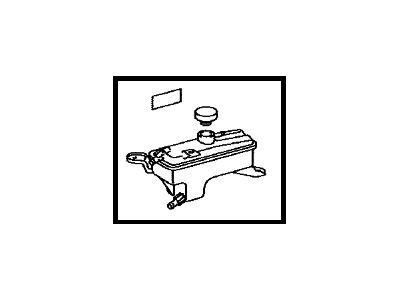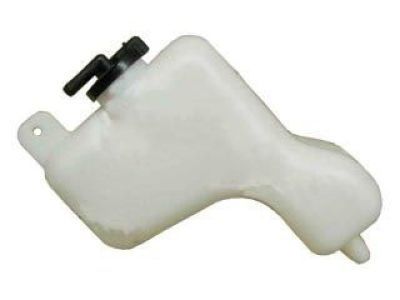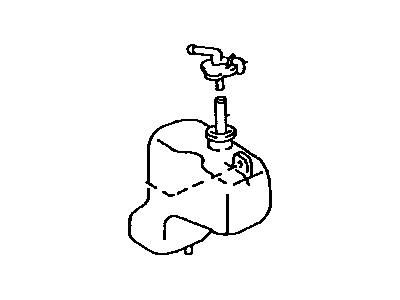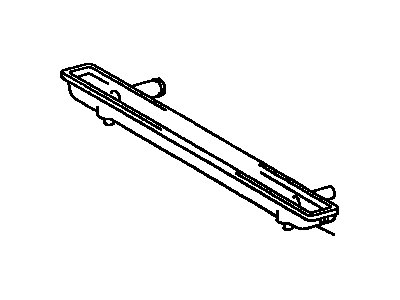

My Garage
My Account
Cart
Genuine Toyota RAV4 Coolant Reservoir
Coolant Tank Reservoir- Select Vehicle by Model
- Select Vehicle by VIN
Select Vehicle by Model
orMake
Model
Year
Select Vehicle by VIN
For the most accurate results, select vehicle by your VIN (Vehicle Identification Number).
17 Coolant Reservoirs found
Toyota RAV4 Radiator Reserve Tank Assembly
Part Number: 16470-28050$87.31 MSRP: $123.08You Save: $35.77 (30%)Ships in 1-2 Business DaysToyota RAV4 Radiator Reserve Tank Assembly
Part Number: 16470-28110$206.35 MSRP: $295.89You Save: $89.54 (31%)Ships in 1-3 Business DaysToyota RAV4 Reserve Tank Assembly, R
Part Number: 16470-F0020$80.70 MSRP: $113.77You Save: $33.07 (30%)Ships in 1-2 Business DaysToyota RAV4 Reserve Tank Assembly, R
Part Number: 16470-25050$80.70 MSRP: $113.77You Save: $33.07 (30%)Ships in 1-3 Business DaysToyota RAV4 Reserve Tank Assembly, R
Part Number: 16470-0V010$206.35 MSRP: $295.89You Save: $89.54 (31%)Ships in 1-3 Business DaysToyota RAV4 Reserve Tank Assembly, R
Part Number: 16470-28113$206.35 MSRP: $295.89You Save: $89.54 (31%)Ships in 1-3 Business DaysToyota RAV4 Reserve Tank Assembly, R
Part Number: 16470-28112$206.35 MSRP: $295.89You Save: $89.54 (31%)Ships in 1-3 Business DaysToyota RAV4 Tank Sub-Assembly, INVER
Part Number: G910G-0R010$216.33 MSRP: $310.19You Save: $93.86 (31%)Ships in 1-3 Business DaysToyota RAV4 Radiator Tank
Part Number: 16441-7A470$174.71 MSRP: $250.52You Save: $75.81 (31%)Ships in 1-3 Business DaysToyota RAV4 Reserve Tank Assembly, R
Part Number: 16470-28111$206.35 MSRP: $295.89You Save: $89.54 (31%)Ships in 1-3 Business DaysToyota RAV4 Reserve Tank Assembly, R
Part Number: 16470-0Z010$226.57 MSRP: $324.88You Save: $98.31 (31%)Ships in 1-3 Business Days
Toyota RAV4 Coolant Reservoir
The coolant reservoir as an important characteristic of the Toyota RAV4 engine cooling system; this part protects from dripping of coolant and from the penetration of the air into the system. There are two main types of Coolant Reservoirs used in RAV4 vehicles: There are two general types of tanks used in steam generators, these are; overflow tank systems and expansion tank systems. As for the overflow system, there is a pressure cap on the radiator While, the expansion system is found at the tank. These both operate to keep the correct levels of coolant and stop air getting into the cooling system and causing problems. General check on the Coolant Reservoir is advised to ascertain it's efficiency in cooling the engines as well as it's reliability.
If you are in demand for superior quality and affordable OEM Toyota RAV4 Coolant Reservoir, then shop with us! We own a wide range of the reduced-priced genuine Toyota RAV4 Coolant Reservoir. You can purchase in confidence as all parts come with a manufacturer's warranty. Any issues with our products? No need to worry as we have a hassle-free return policy to guide you every step of the way.
Toyota RAV4 Coolant Reservoir Parts Questions & Experts Answers
- Q: How to remove and replace a radiator and coolant reservoir in a Toyota Rav4?A:To remove and replace a radiator, first have the refrigerant discharged by an automotive air conditioning technician. Then, disconnect the negative battery terminal and remove the battery hold-down clamp. Remove the front bumper cover, headlight housings, and drain the cooling system. Detach the hood release cable, remove the radiator air deflector, and disconnect the electrical connectors to the horns. Disconnect the inlet and outlet lines to the condenser and unclip the Cooling Fan Assembly wiring harness. Remove the radiator mounting brackets and upper radiator support. Disconnect the bypass hoses from the radiator and squeeze the clamps to disconnect the upper and lower radiator hoses and coolant reservoir hoses. Lift out the radiator and fan and A/C Condenser, remove the oil cooler tube clips and bolts, and remove the fan shroud support mounting bolts. Remove the air conditioning condenser and inspect the radiator for leaks, damage, and internal blockage. If repairs are needed, have a professional radiator shop or dealer service department perform the work. Clean the radiator with compressed air and a soft brush, being careful not to bend the cooling fins. Installation is the reverse of removal, and the cooling system should be refilled with the proper mixture of antifreeze and water. Finally, have the air conditioning system evacuated, charged, and leak tested, and add the proper amount of refrigeration oil to the compressor if necessary. To replace the coolant reservoir, drain the cooling system, disconnect the hoses and mounting fasteners, and then reinstall the reservoir and refill the cooling system.
Related Toyota RAV4 Parts
Browse by Year
2024 Coolant Reservoir 2023 Coolant Reservoir 2022 Coolant Reservoir 2021 Coolant Reservoir 2020 Coolant Reservoir 2019 Coolant Reservoir 2018 Coolant Reservoir 2017 Coolant Reservoir 2016 Coolant Reservoir 2015 Coolant Reservoir 2014 Coolant Reservoir 2013 Coolant Reservoir 2012 Coolant Reservoir 2011 Coolant Reservoir 2010 Coolant Reservoir 2009 Coolant Reservoir 2008 Coolant Reservoir 2007 Coolant Reservoir 2006 Coolant Reservoir 2005 Coolant Reservoir 2004 Coolant Reservoir 2003 Coolant Reservoir 2002 Coolant Reservoir 2001 Coolant Reservoir 2000 Coolant Reservoir 1999 Coolant Reservoir 1998 Coolant Reservoir 1997 Coolant Reservoir 1996 Coolant Reservoir
